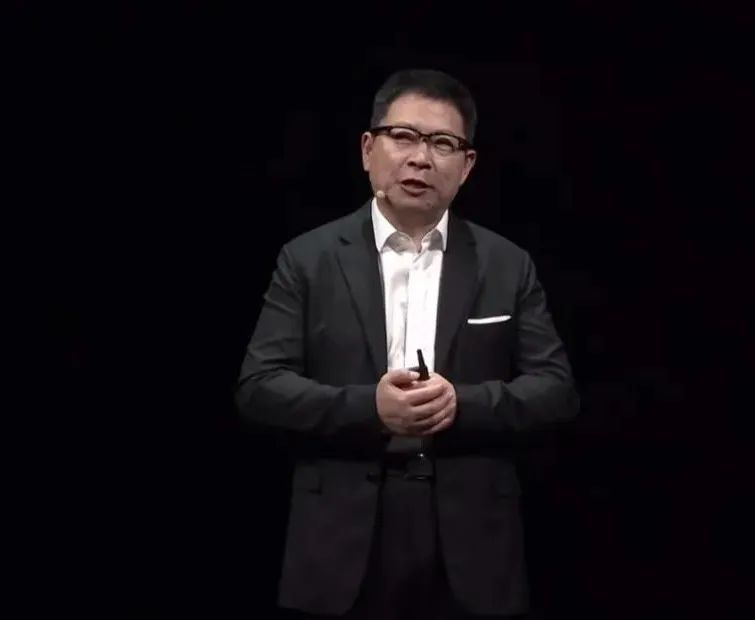Article by Jingtao Wu
“Far Ahead” is the highlight of this press conference.
Despite the “extended-range controversy” on Weibo some time ago, the Huawei AITO Wanjie series set a new record in August.
With only two extended-range models, M5+M7, the Wanjie series achieved the “milestone” of delivering over 10,000 units in just 5 months, breaking the record for the fastest delivery of new cars to break 10,000 units.
As the previous record holder, Ideal Auto took 23 months.
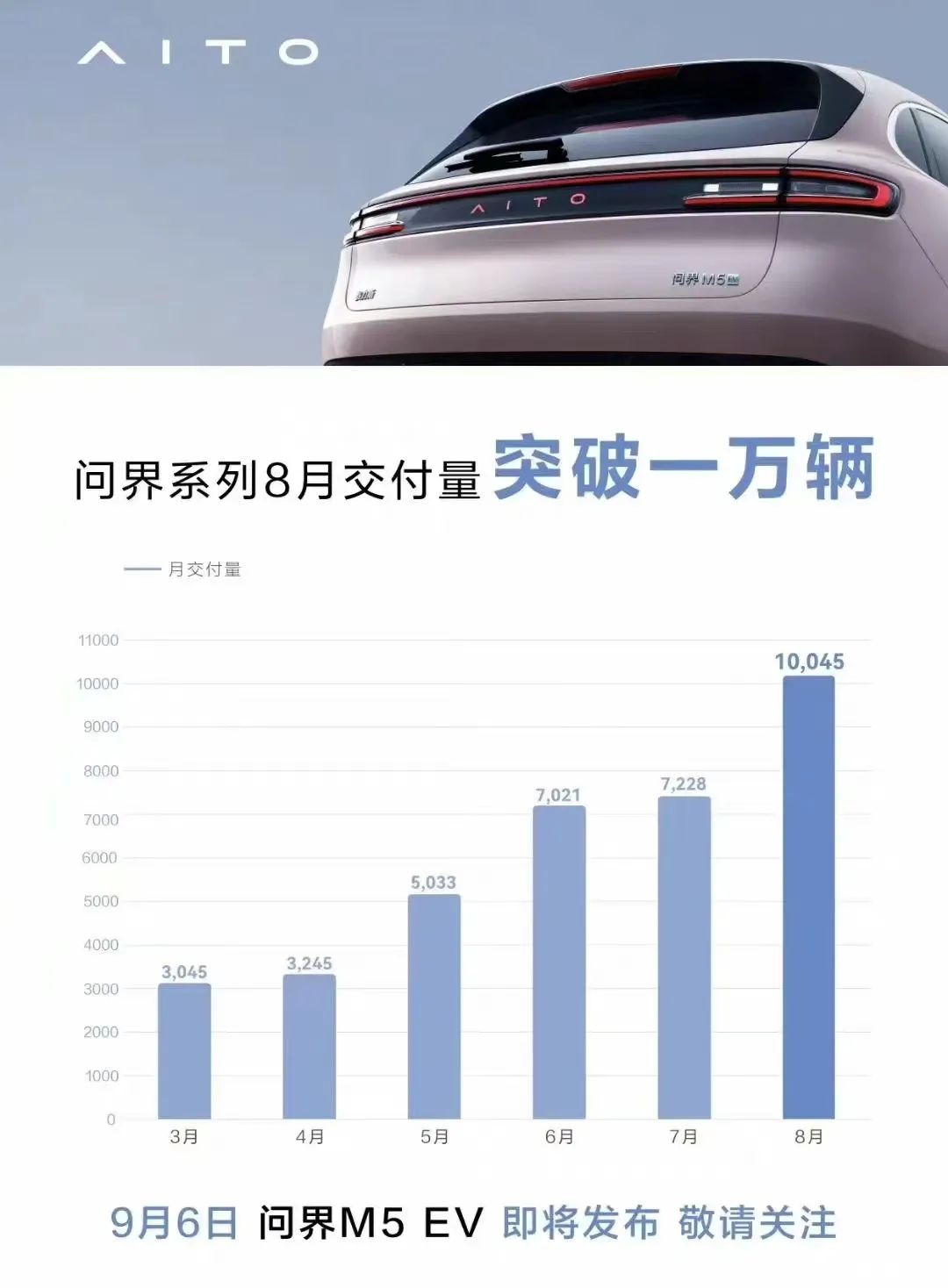
At yesterday’s Huawei Autumn New Product Launch, Huawei’s Executive Director, Terminal BG CEO, and Intelligent Automotive Solutions BU CEO, Chengdong Yu, unveiled the first pure electric vehicle of the AITO Wanjie brand—the AITO Wanjie M5 EV, with a price of CNY 288,600 for the standard rear-wheel drive version and CNY 319,800 for the four-wheel drive performance version.
Before the press conference started, what I looked forward to the most was the “golden sentence” that Mr. Yu would say during the announcement. After all, during the launch of the Wanjie M7, Mr. Yu’s continuous quips sparked lively discussions afterwards. This has become his distinct hosting style and the biggest highlight of AITO Wanjie press conferences.

During this M5 EV launch, Mr. Yu used the term “far ahead” the most, which threaded through the entire press conference in terms of technology, interior quietness, and smoothness of the in-car entertainment system.
And the car that Mr. Yu had the most comparisons and critiques (diss) of was the Tesla Model Y.
The pure electric SUV with the “highest appearance value”
As the pure electric version of the Wanjie M5, the M5 EV maintains a similar size and a wheelbase of 2,880mm as the extended-range version. However, some distinctions have been made to its appearance.
The most notable change is in the front of the car. The M5 EV uses the customary full-enclosed grille of pure electric vehicles, replacing the previous large-area horizontally-dominant central chrome grille used by the extended-range version. Below the license plate bracket, the M5 EV is equipped with an active air intake grille and a new set of air intake ducts has been added to the sides of the bumper.
The inside of the headlamp assembly has also been changed from the reflective bowl of the extended-range version to a lens assembly design.
 These adjustments make the visual appearance of the M5 EV’s front end more simple and in line with consumers’ inherent understanding of pure electric vehicles compared to the extended-range version.
These adjustments make the visual appearance of the M5 EV’s front end more simple and in line with consumers’ inherent understanding of pure electric vehicles compared to the extended-range version.
In terms of the side of the vehicle, the rear-wheel-drive version is equipped with 19-inch low-drag wheels, while the all-wheel-drive version uses 20-inch low-drag wheels.
Due to improvements in reducing wind resistance such as an active air intake grille, side air intakes, and low-drag wheels, the M5 EV’s drag coefficient has been lowered to Cd 0.266, compared to the Cd 0.32 of the extended-range M5, resulting in a considerable improvement.
Regarding the Tesla Model Y, which has even lower wind resistance, Mr. Yu, CEO of the company, expressed: “Big body with a small head, lowering the front end too much looks too ugly. For us, the aesthetics is also very important. Among pure electric SUV models, the M5 EV has the best appearance.”
In terms of vehicle color, the M5 EV has added two new colors, Dawn Pink and Warm Starry Sky, to the previously available colors, providing six exterior color options for consumers to choose from.
In terms of the interior of the vehicle, the design of the M5 EV’s interior is basically the same as that of the previous extended-range M5 model. The biggest highlight is the adoption of the HarmonyOS 3 intelligent cockpit, making the M5 EV the first all-electric vehicle to use this intelligent cockpit.
The car’s infotainment system has a “Super Desktop” feature that allows users to seamlessly use mobile apps on the car’s display. At the same time, it is equipped with Xiao Yi, an intelligent voice assistant with four-tone zone recognition.
During the press conference, they specifically compared the navigation response speed of the car’s infotainment system with that of the Model Y, and all three comparison categories showed a significant improvement.
As the use of HUD functions become more prevalent in smart cars, the M5 EV’s HUD has highly intelligent adjustment capability, automatically adjusting the display height of the HUD by recognizing the position of the user’s eyes with cameras, eliminating the need for manual adjustment.
The sound system is also a configuration that the company has always placed great importance on. The new car is equipped with a 1000W HUWEI SOUND sound system with 19 speakers, achieving a 7.1 surround sound field.The main driver seat is also equipped with headrest speakers, which provides a certain improvement to the experience of in-car voice communication.
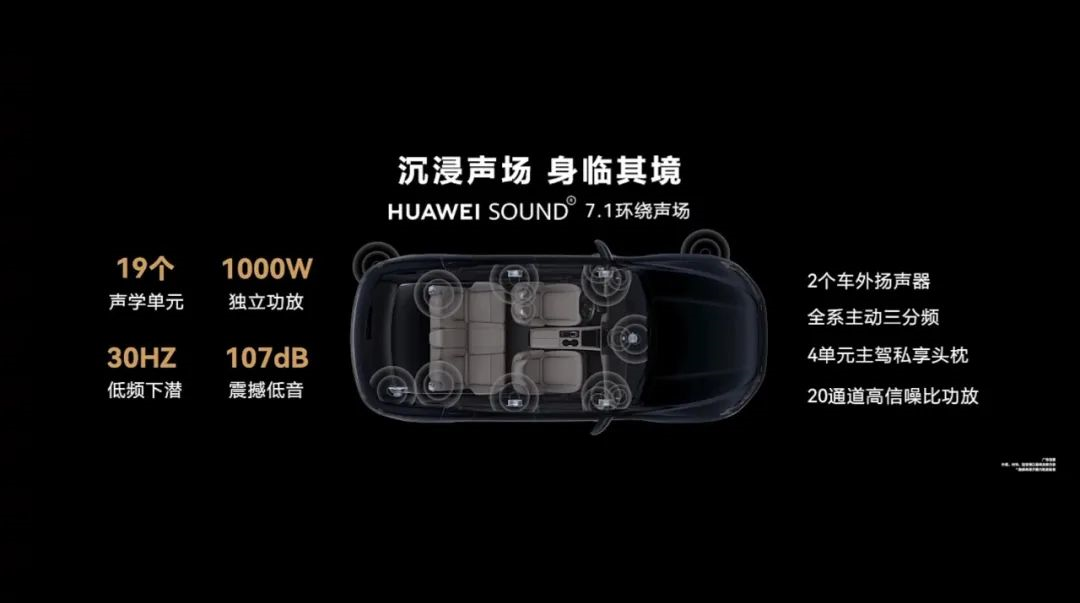
The M5 EV has added new interior colors, Sparrow Feather Red and Shao Hua Apricot, in addition to the two original ones, providing a total of four interior color options for customers to choose from.
Compared to the Model Y, these cockpit features can be said to be “fully suppressed”, but the precise strike by the M5 EV against competitive models goes beyond that.
In response to the problem of high in-car temperatures caused by panoramic sunroofs in summer, the M5 EV’s sunroof features a micron double-layer silver-plated insulation technology with a UV interception rate of over 99.9%.
During the conference, the results of a direct comparison with the Tesla Model Y were presented in an unreserved manner, indicating that the surface temperature inside the M5 EV’s sunroof is 20°C lower than that of the Model Y.
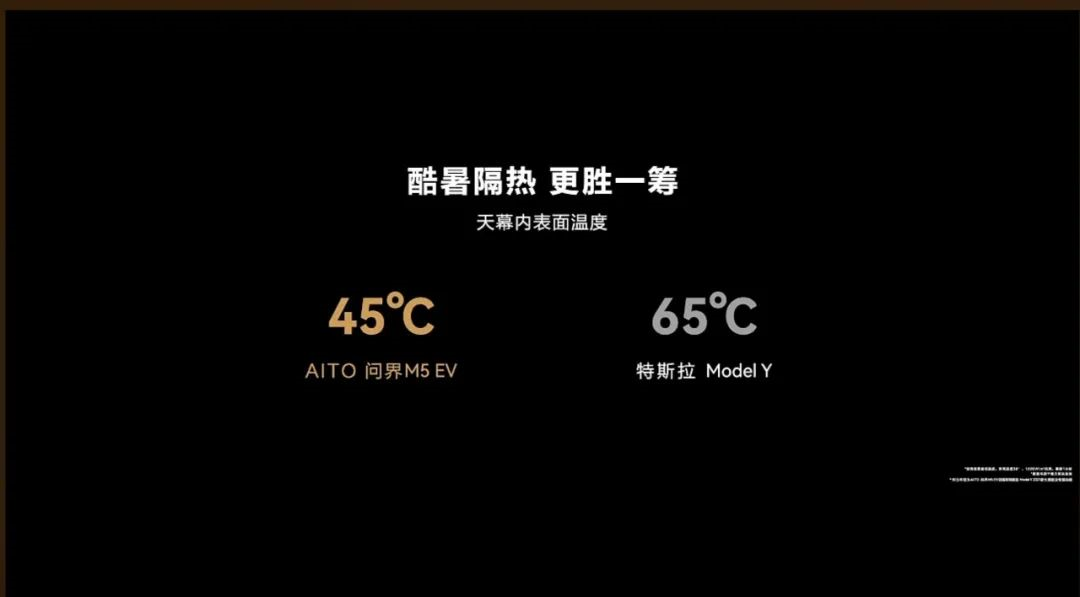
Achieving insulation is one thing, but it also requires cooling. The M5 EV is equipped with a heat pump water-cooled air conditioner. Naturally, the Model Y is used as the benchmark for comparison. The M5 EV’s cooling speed is twice as fast as that of the Model Y, and it picks at Model Y’s weaknesses in every aspect.
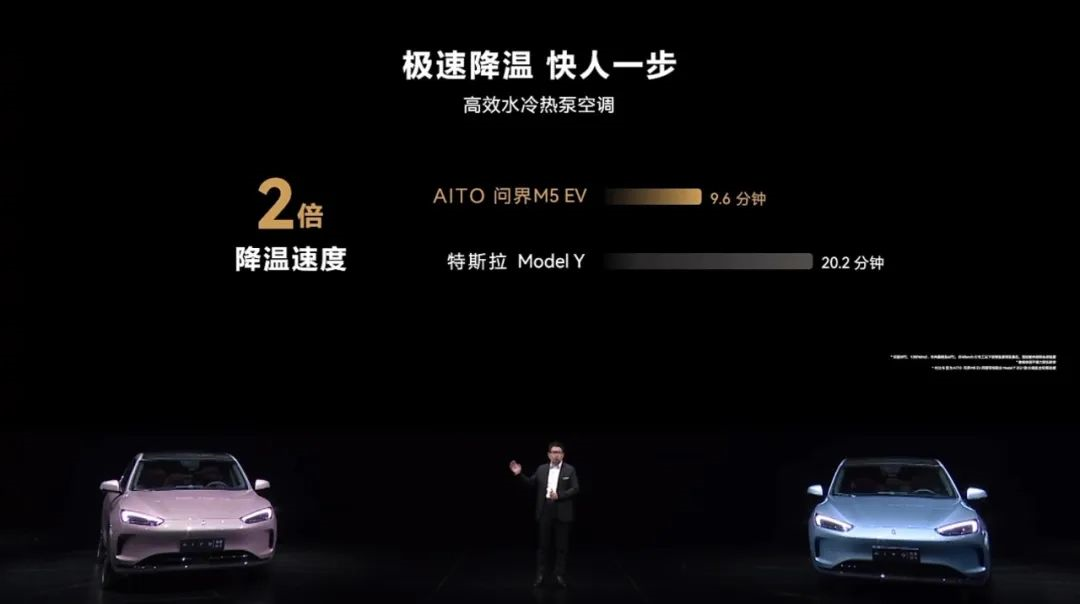
As for another weakness of the Model Y, NVH, the M5 EV naturally does not miss the opportunity to “expand its advantages”.
Thanks to the double-layer soundproof glass used in all car windows, including the panoramic sunroof, the noise level when driving on rough roads at 60km/h and the voice clarity at 120km/h are both significantly better than that of the Model Y.
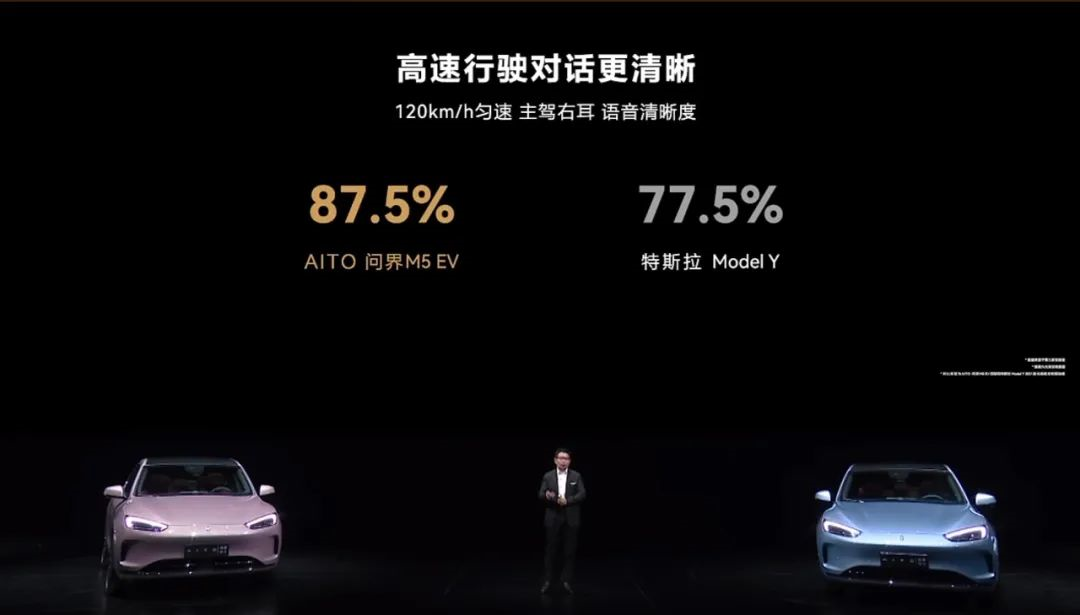
It truly achieves a “precise strike” on the direct competitor, the Model Y, in all aspects.
Performance “leading by far”?
According to Mr. Yu’s statement at the conference, the M5 EV is based on the M5 extended-range version, with the range extender and gasoline tank removed, and the battery capacity increased from 40kWh to 80kWh.
In addition to the increase in battery size and capacity, with the disappearance of the range extender, the front compartment of the rear-wheel drive model has turned into a front trunk with a capacity of 80L, further expanding storage space.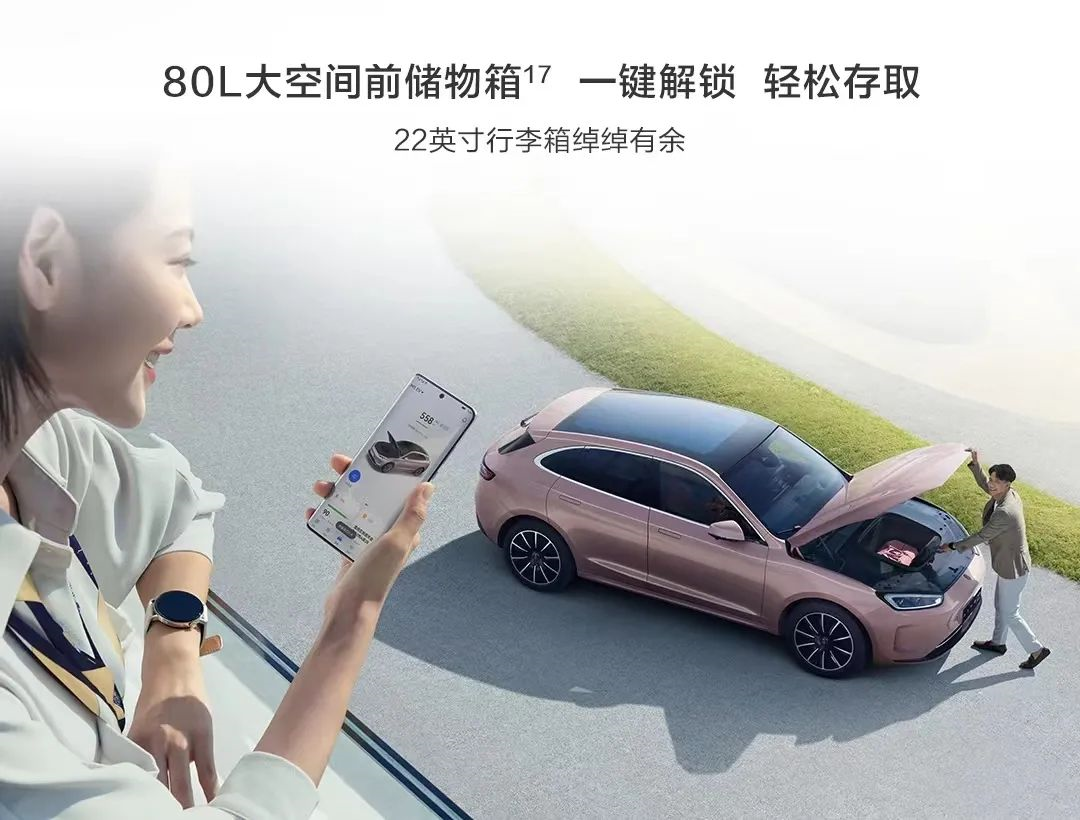
Both the rear-wheel-drive standard version CLTC and the four-wheel-drive performance version are equipped with an 80kWh lithium iron phosphate battery. The CLTC cruising range of the rear-wheel drive standard version is 620km, and the CLTC cruising range of the four-wheel drive performance version is 552km.
Regarding these results, Mr. Yu expressed: “This performance is better than the cruising range of most 90 and 100kWh battery electric vehicle models from other brands.”
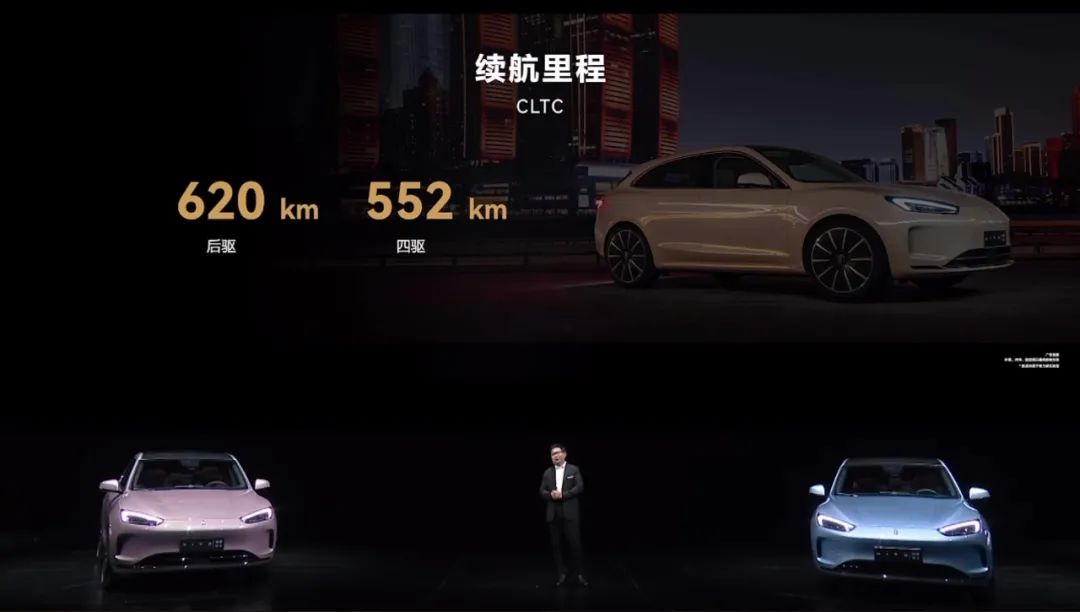
However, at this point, Wanjie did not directly compare it to the Tesla Model Y during the press conference. The CLTC cruising range of the rear-wheel drive version equipped with a 60kWh battery is 545km, and the CLTC cruising range of the four-wheel drive long-range version equipped with a 78.4kWh battery is 660km. Comparatively, the range performance of the M5 EV has no advantages.
In terms of power, the performance version of the M5 EV model is equipped with front 165 kW, rear 200 kW, total power of 365 kW front and rear dual-motors. The standard version of the model is equipped with a 200 kW rear-mounted motor. The four-wheel drive performance version can accelerate from 0-100 km/h in 4.5 seconds, and the rear-wheel drive standard version can accelerate from 0-100 km/h in 7.1 seconds.

The M5 EV provides five conventional driving modes and an “ultra-power saving mode”, which can provide emergency mileage of 12 kilometers with one click.

In terms of the chassis, Wanjie M5 EV still uses a front double-wishbone and rear H-arm multi-link structure full aluminum alloy chassis, which can achieve a 50:50 front-to-rear axle load ratio. It is also equipped with Huawei’s self-developed HUAWEI DATS dynamic adaptive torque system.
Wanjie officials stated that the system can intelligently adjust torque on bumpy roads. Compared with traditional fuel vehicles, the response time for road perception has been improved by 100 times, which can improve smoothness. When passing over speed bumps at 40km/h, the time for convergence of bumps (bump feel) is reduced by 46%, and the forward shock intensity of the seat (impact feel) is reduced by 31%.


According to Mr. Yu, there are only two car companies in the world that have this technology – Tesla and Weltmeister. He also stated that after obtaining this technology, Weltmeister has far surpassed its competitors and is leading the industry.
In terms of the energy replenishment system that everyone is concerned about in pure electric vehicle models, the Weltmeister M5 EV has obtained the industry’s first five-star certification for charging compatibility, which can support 35 charging operators, covering over 97% of public charging piles.
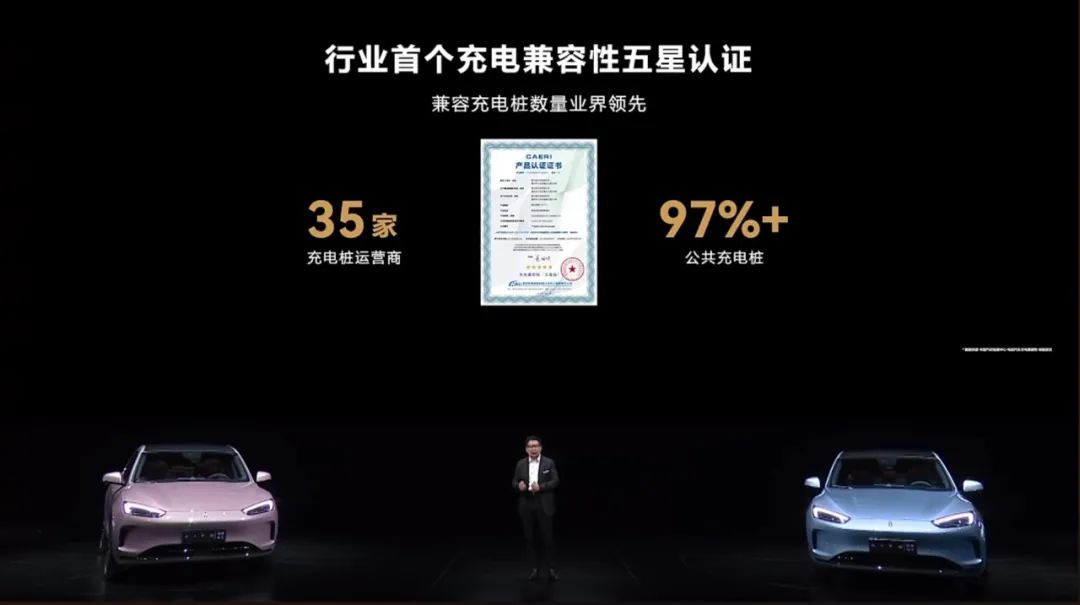
But as far as I know, most domestically-produced regular electric vehicle models can achieve almost 100% charging pile matching, but most models have not undergone specially certifications.
In response to Tesla’s strong point – intelligent assisted driving, Weltmeister’s strategy is to “avoid its sharp edge”.
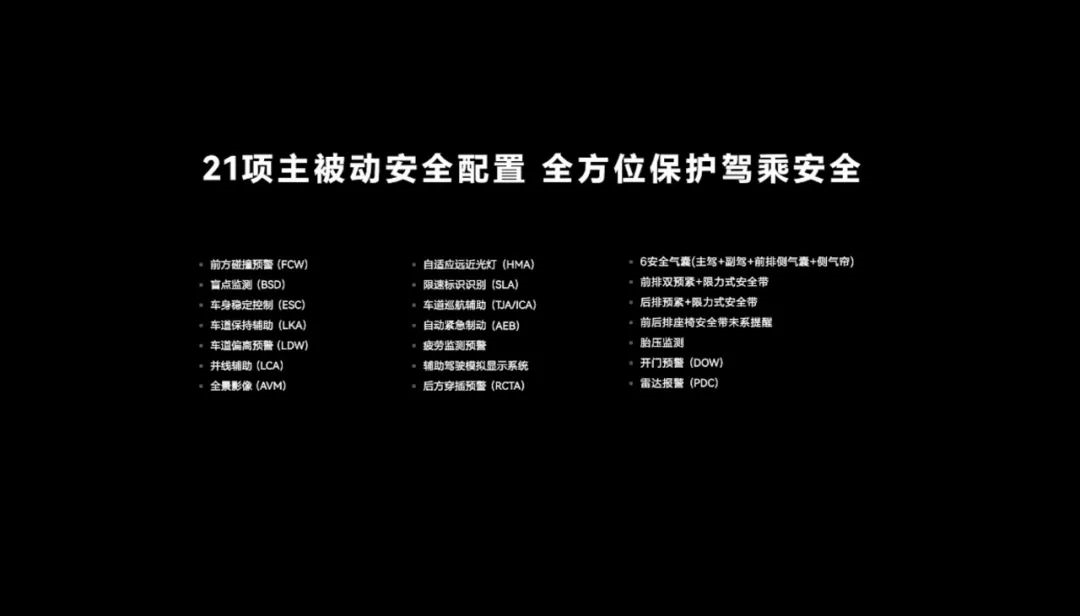
Based on existing information, the Weltmeister M5 EV should continue to use the same Bosch ADAS “toolbox” as the extended range version. From the promotional materials, it is not difficult to see that the M5 EV is limited by relatively basic hardware configurations, so the currently available assisted driving functions are relatively basic. At the same time, it can be foreseen that the system’s room for improvement in the future is also very limited.
Advantages and Disadvantages
Just a few hours after the press conference ended, as of 20:30 that night, the Weltmeister official announced that the number of M5 EV orders had exceeded 30,000 for users.
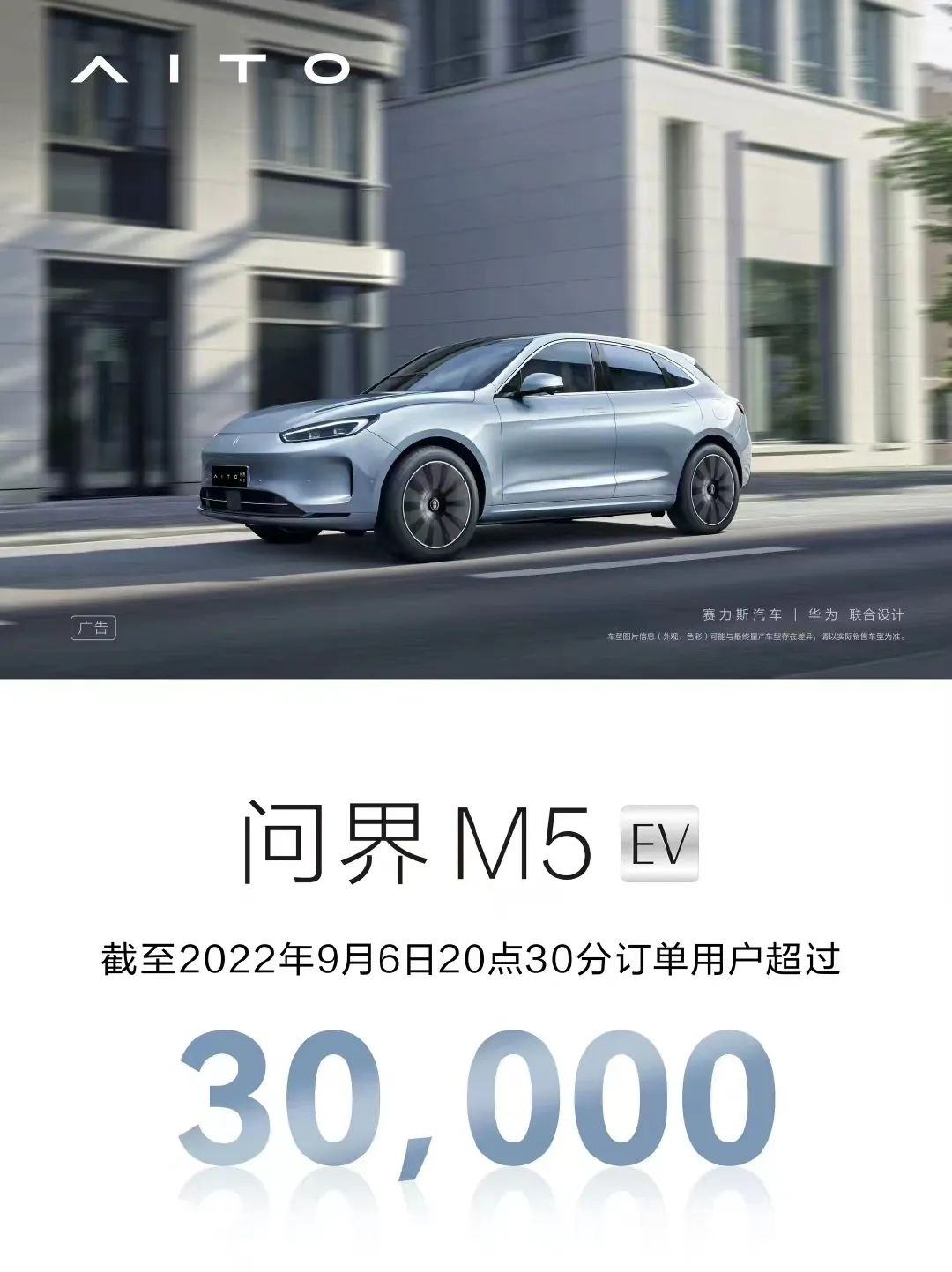
From the user portrait of Weltmeister car owners before, they are basically deeply involved in Huawei’s mobile terminal customer base. Coupled with the strong promotion and sales network of Huawei, the Weltmeister series can complete delivery of over 10,000 vehicles in just 5 months, breaking the historical record, and the influence of Huawei’s “far ahead” is evident.
Although Mr. Yu mentioned the most frequently used word at the press conference was “far ahead”, compared to the direct targeted competitor Model Y, after a comprehensive comparison, the only aspects that the Weltmeister M5 EV can truly be considered significantly leading in are the intelligent cockpit and riding quality.
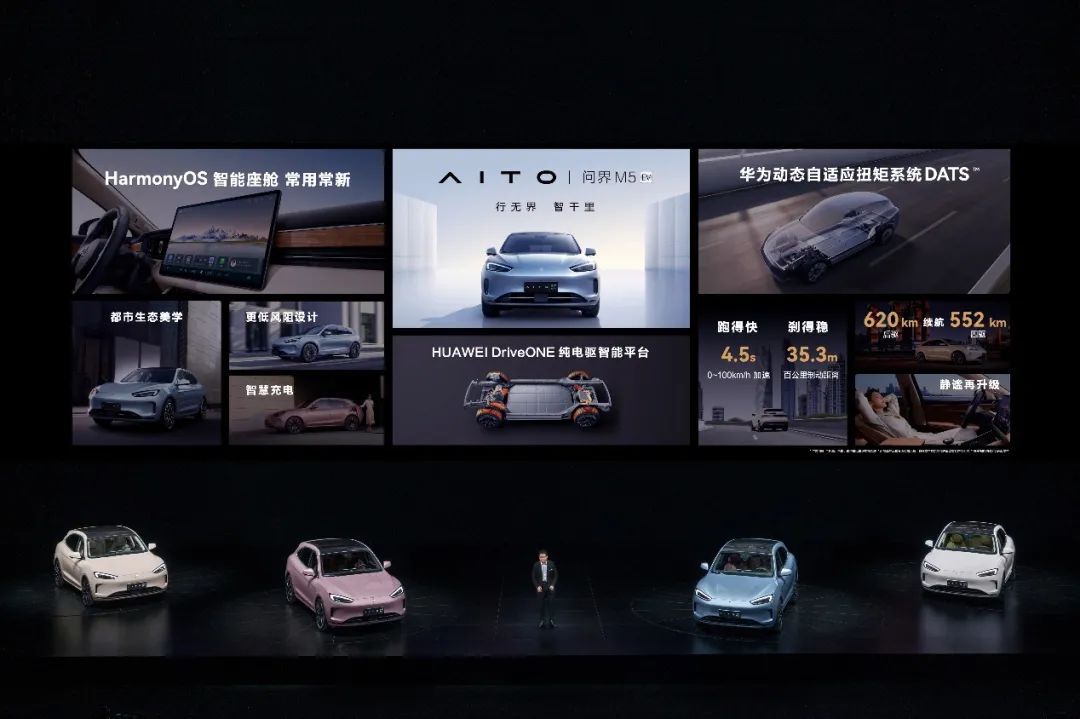 For young consumers who pursue “intelligence”, having only the Hongmeng cockpit with a head-up display is not enough. With the continuous improvement of the penetration rate of assisted driving functions, the current and future improvement space of the “intelligent driving” experience is increasingly valued by young consumers.
For young consumers who pursue “intelligence”, having only the Hongmeng cockpit with a head-up display is not enough. With the continuous improvement of the penetration rate of assisted driving functions, the current and future improvement space of the “intelligent driving” experience is increasingly valued by young consumers.
To put it bluntly, the field of “intelligent driving” has become the stage for various new car companies to show off their skills. However, including the latest M5 EV, vehicles from established brands need to improve in this area.
As for challenging the Model Y, it remains to be seen whether there will be a “magic vs magic” showdown between two brands, Huawei and Tesla, with highly loyal fans.
This article is a translation by ChatGPT of a Chinese report from 42HOW. If you have any questions about it, please email bd@42how.com.
